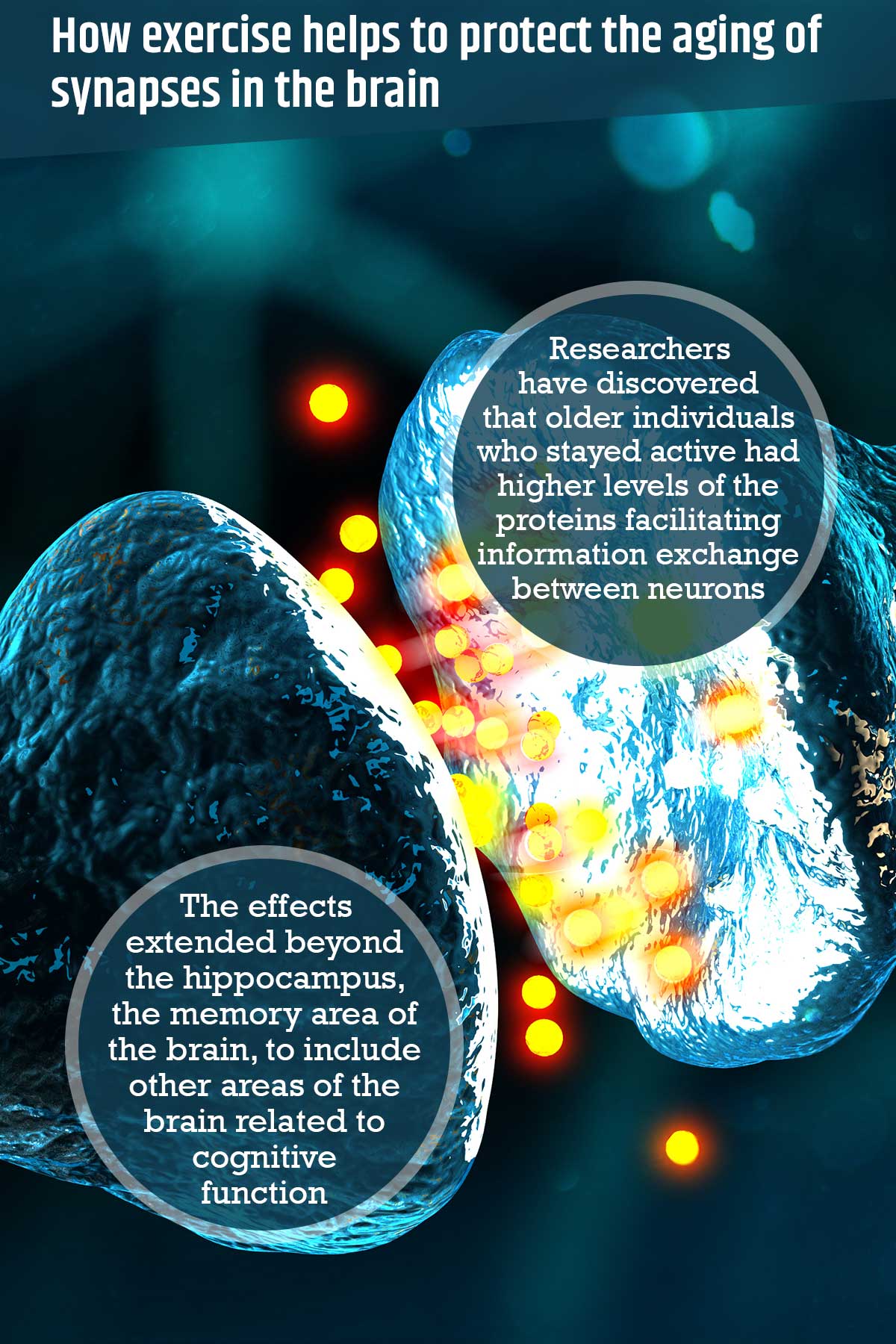Researchers have found that when older individuals remain active, they have more of a class of proteins in their brains that enhance the connections between the neurons responsible for maintaining healthy cognition.
This protective effect was seen even in individuals whose brains at autopsy were full of toxic proteins related to Alzheimer’s as well as other neurodegenerative diseases.1✅ JOURNAL REFERENCE
DOI: 10.1002/alz.12530
The benefits of exercise on cognition have been demonstrated in mice but have not been easy to show in humans. This study makes use of human data to demonstrate that synaptic protein regulation is associated with physical activity and could be driving the beneficial cognitive outcomes seen.
Data were made use of from another project that tracked physical activity later in life of older individuals, who had also consented to donate their brains after they died.
Maintaining the integrity of these connections between neurons could be crucial in helping to prevent dementia since the synapse is the site where cognition takes place. Physical activity is a readily available tool that may help improve this synaptic functioning.
The researchers discovered that older individuals who stayed active had higher levels of the proteins facilitating information exchange between neurons.
This correlated with the results from a previous study that found individuals having more of these proteins in their brains when dying maintained better cognition later in life.
It was also discovered that the effects extended beyond the hippocampus, the memory area of the brain, to include other areas of the brain related to cognitive function.
It could be that a global sustaining effect is exerted by physical activity, stimulating and supporting healthy function of the proteins facilitating synaptic transmission throughout the brain.
Most elderly individuals’ brains accumulate tau and amyloid, the characteristic toxic proteins of Alzheimer’s pathology. Many researchers believe the accumulation of amyloid happens first, then tau, resulting in neurons and synapses falling apart.
The researchers had previously discovered that synaptic integrity, regardless if measured in living individuals’ spinal fluid or autopsied individuals’ brain tissue, seemed to dampen the relationship between tau and amyloid, and between tau and neurodegeneration.
In elderly individuals with higher protein levels related to synaptic integrity, this neurotoxicity cascade that results in Alzheimer’s disease seem to be attenuated. These two studies taken together show how important the maintenance of synaptic health is for supporting the brain against Alzheimer’s.



